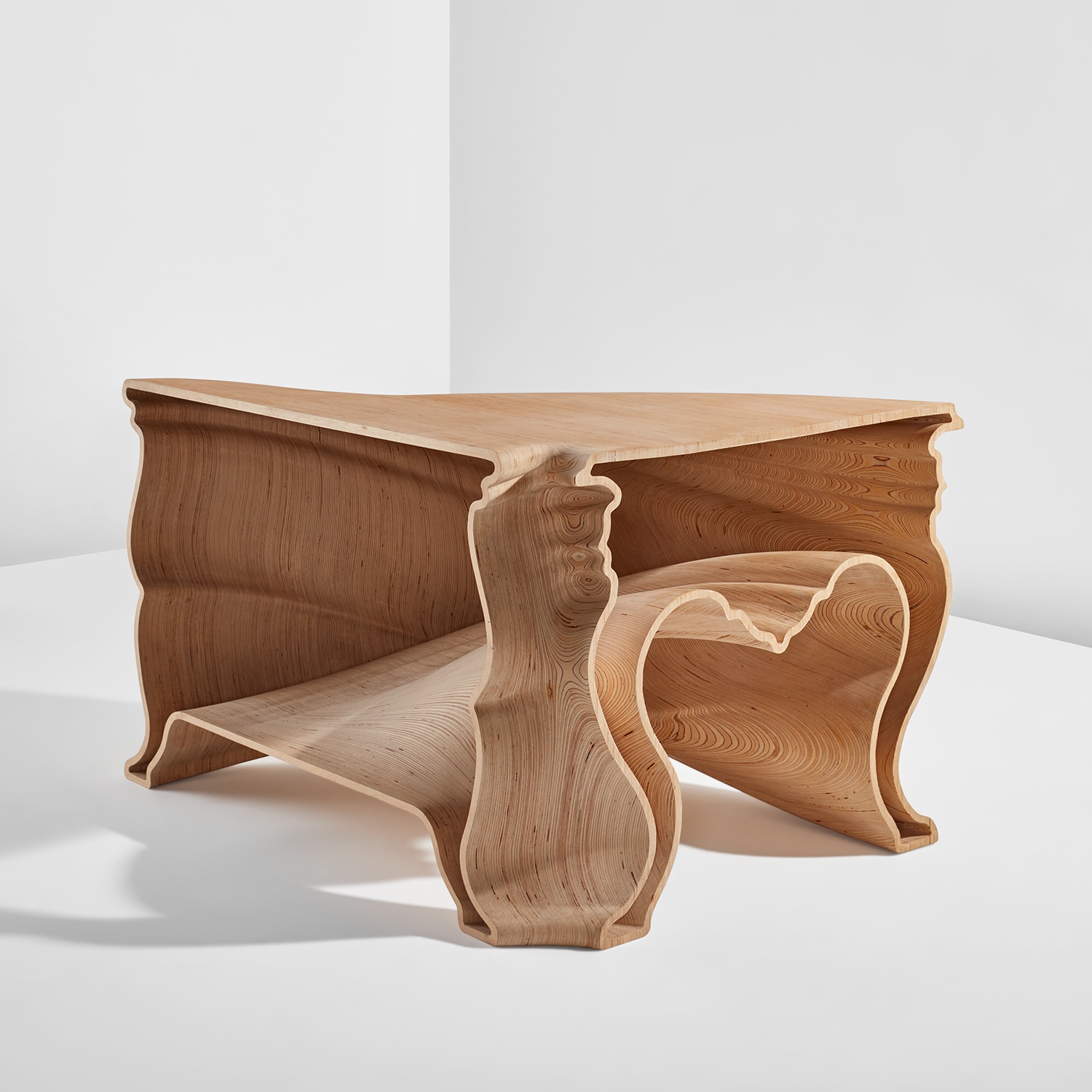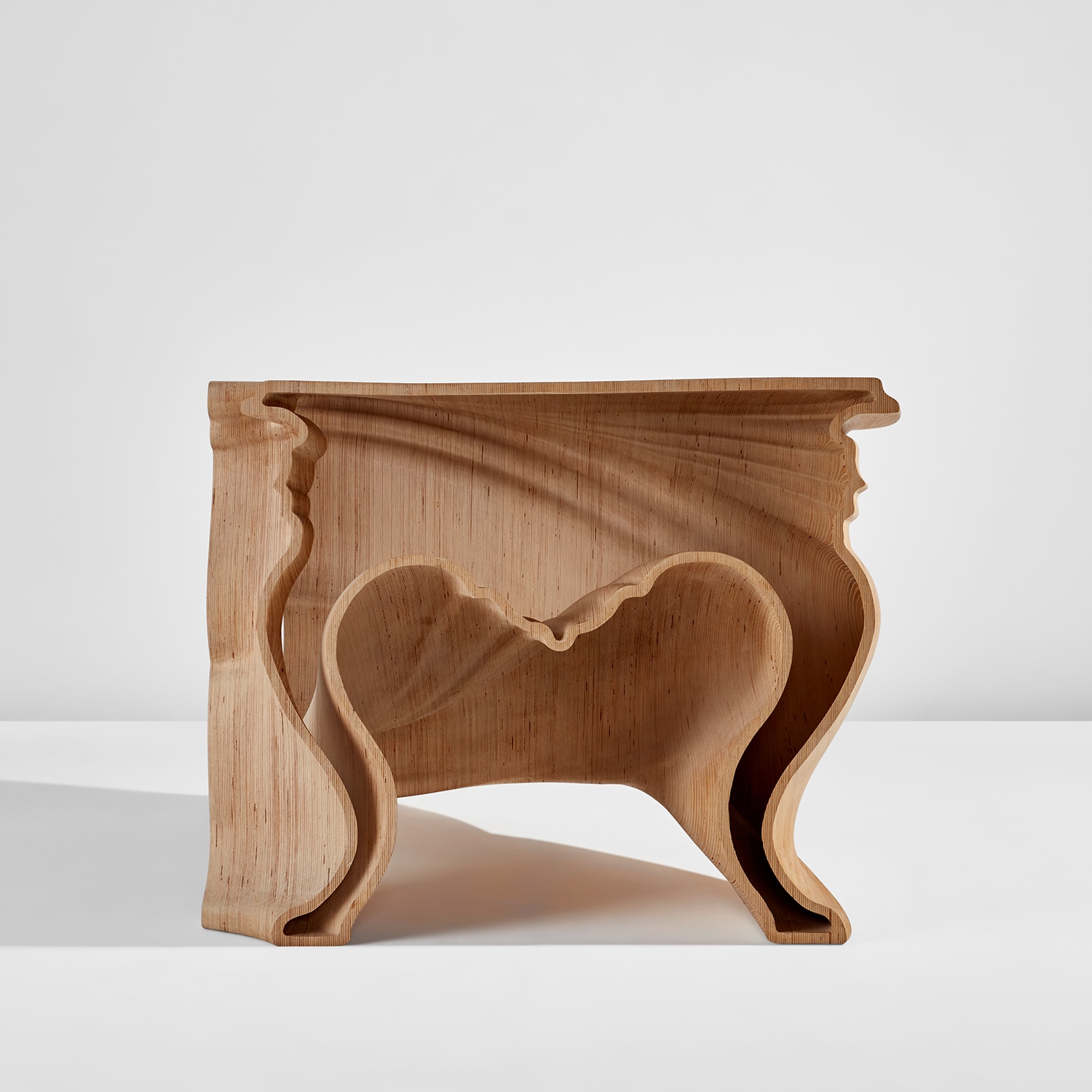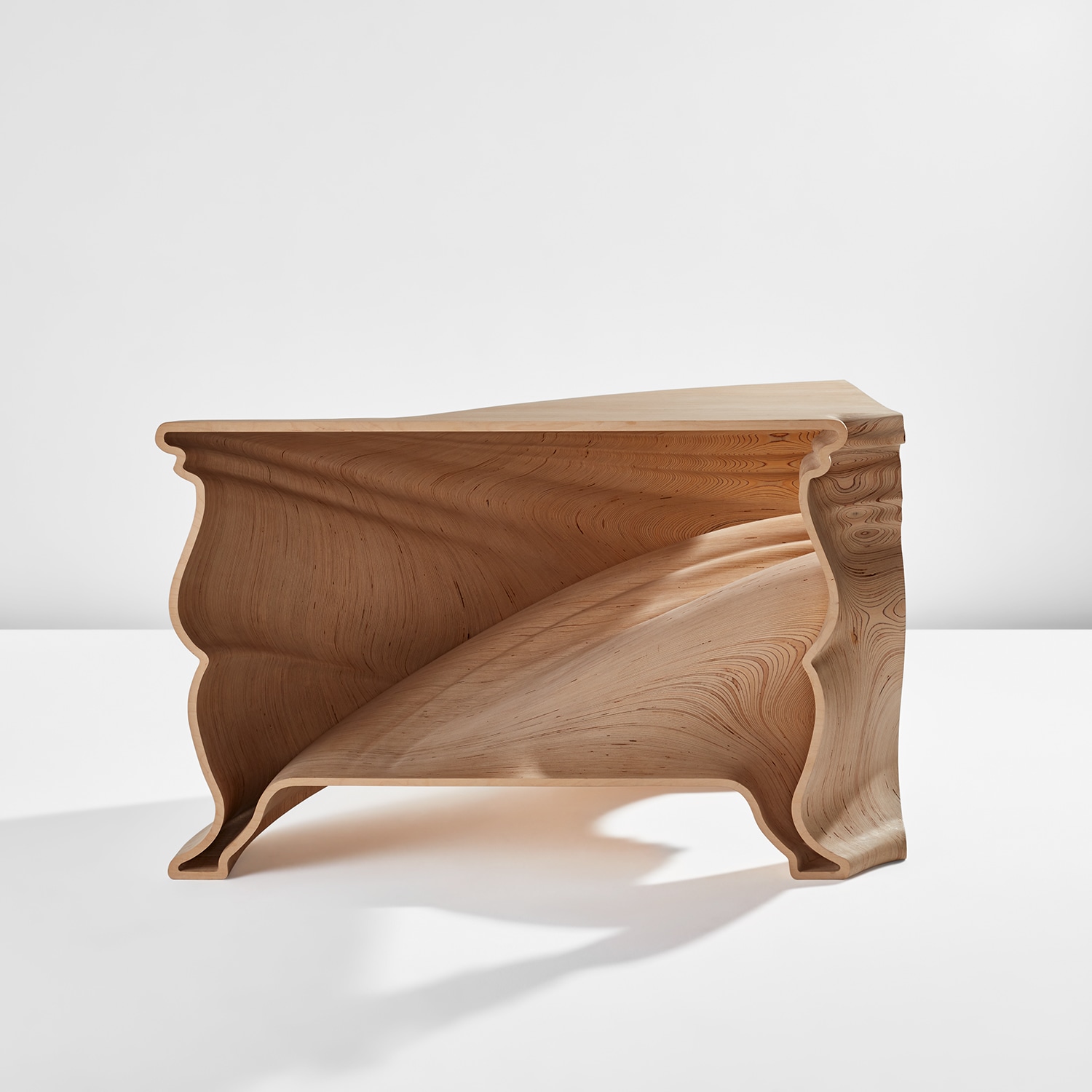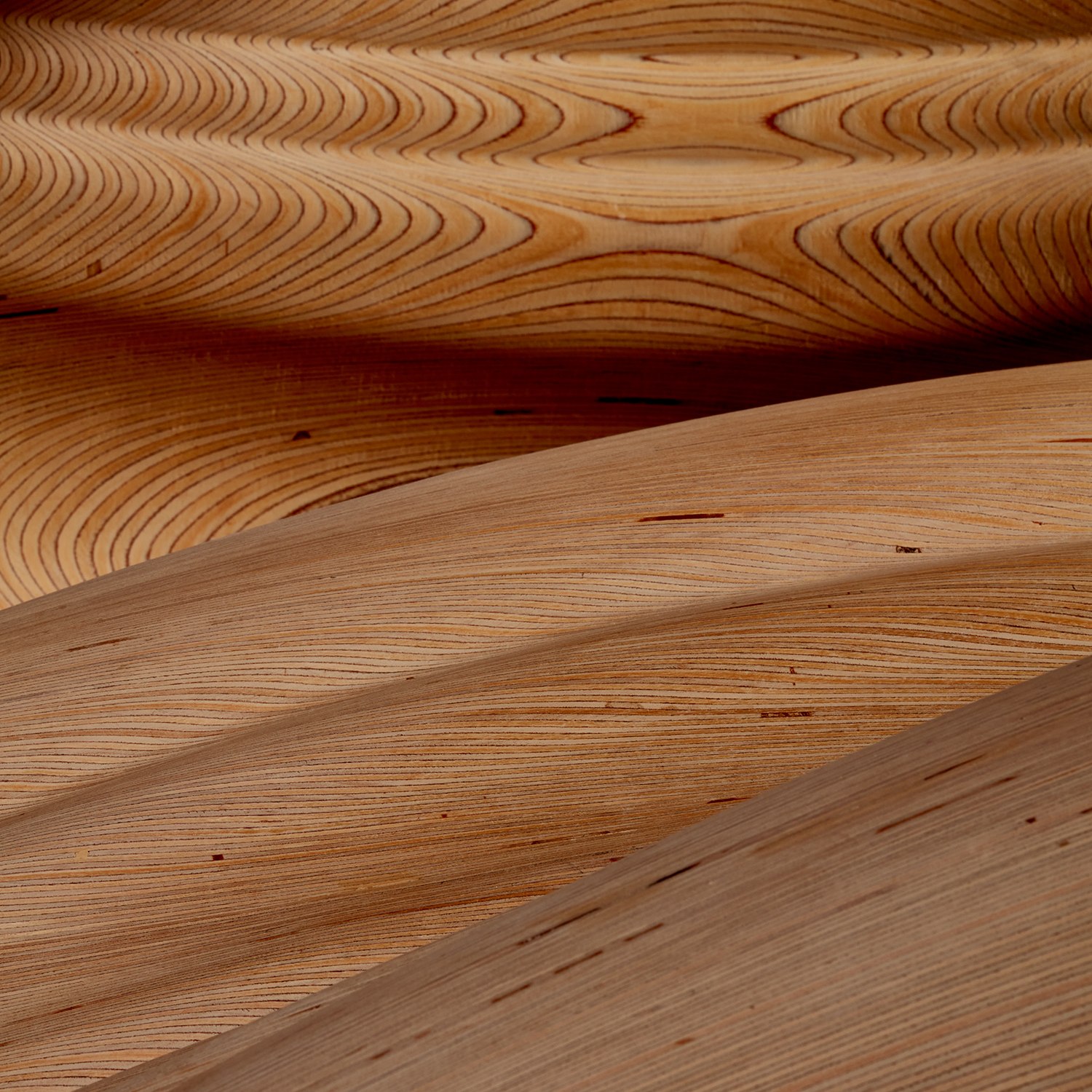













Property from an Important European Collection
104
Jeroen Verhoeven
"Cinderella" table
2004
CNC-cut birch plywood.
31 3/4 x 52 1/2 x 39 7/8 in. (80.6 x 133.4 x 101.3 cm)
Produced by Demakersvan, Rotterdam, Netherlands. Number 8 from the edition of 20 plus 4 artist's proofs and 1 prototype.